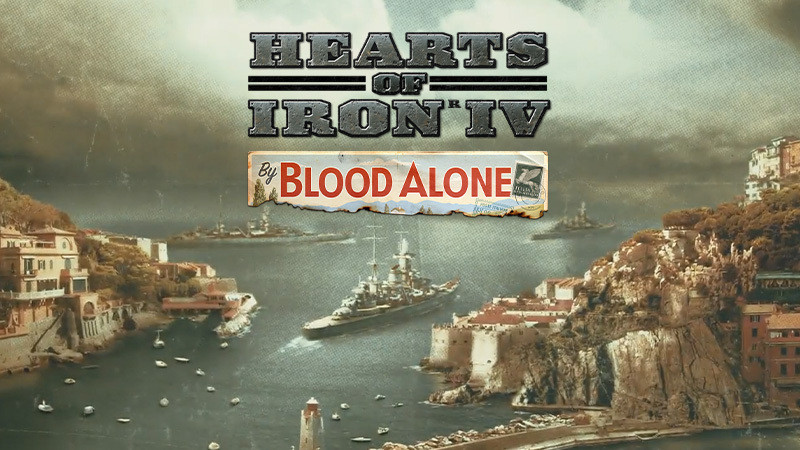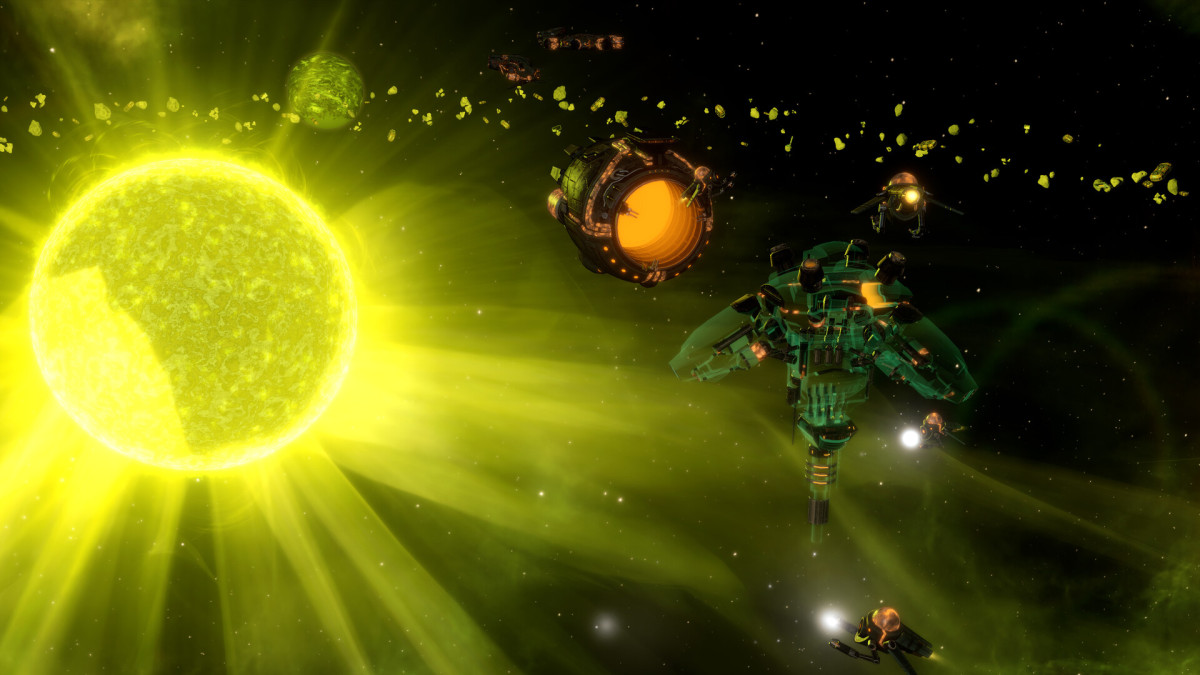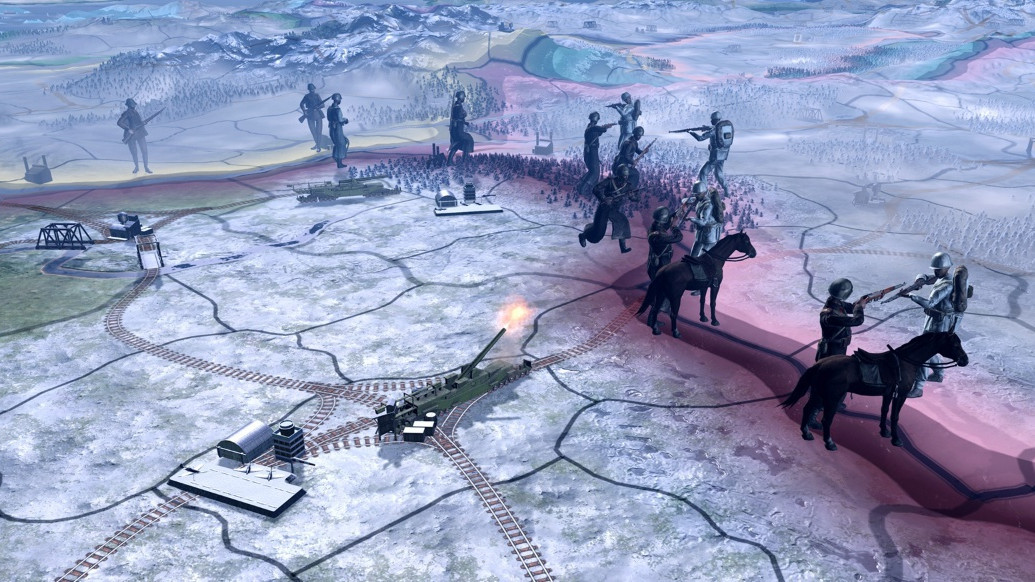
All Combat Stats Explained in Hearts of Iron IV
Table of Contents
Hearts of Iron IV, being a war simulation game, contains a lot of different kinds of combat units on land, sea and air. For newer players the huge amount of numbers can be overwhelming and it's not easy to know what one should focus on to gain an advantage in a particular area, or what exactly stat modifiers from national spirits or technologies will do for you.
The purpose of this guide is to explain what all of these combat stats do, in a way that is easy to understand.
Army Combat Stats Explained for HOI4
First up, we will explain all of the combat stats for land units in HOI4. Some of them are self explanatory, so for those we will only provide a short description.
Max Speed: How fast the unit can traverse the land, in ideal conditions (good terrain, high supply and organization, sufficient oil supply for divisions that use oil)
HP: Hit Points, basically the sum of all manpower and equipment in a division, in terms of how much damage it can withstand before being completely destroyed. You can see how much HP a deployed division has left by its strength bar (the small yellow bar). If this value reaches zero on any deployed unit, it will be destroyed. Manpower and equipment reinforcements will refill the strength bar as they are delivered to the division. Damaged units will perform less well in combat, proportionally to how damaged they are.
Organization: This is the readiness and willingness of a division to perform combat actions, whether attacking or defending. The value shown in a division's stats is its maximum capacity, and a deployed unit's organization will gradually refill to its maximum level when it is out of combat and in good supply. The organization of a division is calculated from the average of all battalions within the division, so you should avoid making divisions entirely from low-organization battalions such as tanks or artillery, and instead mix them with high-organization ones, like infantry or motorized infantry. Organization is depleted by combat, movement, bad supply and attrition. Upon reaching zero organization, the division will retreat from any combat it is currently involved in (either halting an attack if they are the attackers, or retreating if they are the defenders).
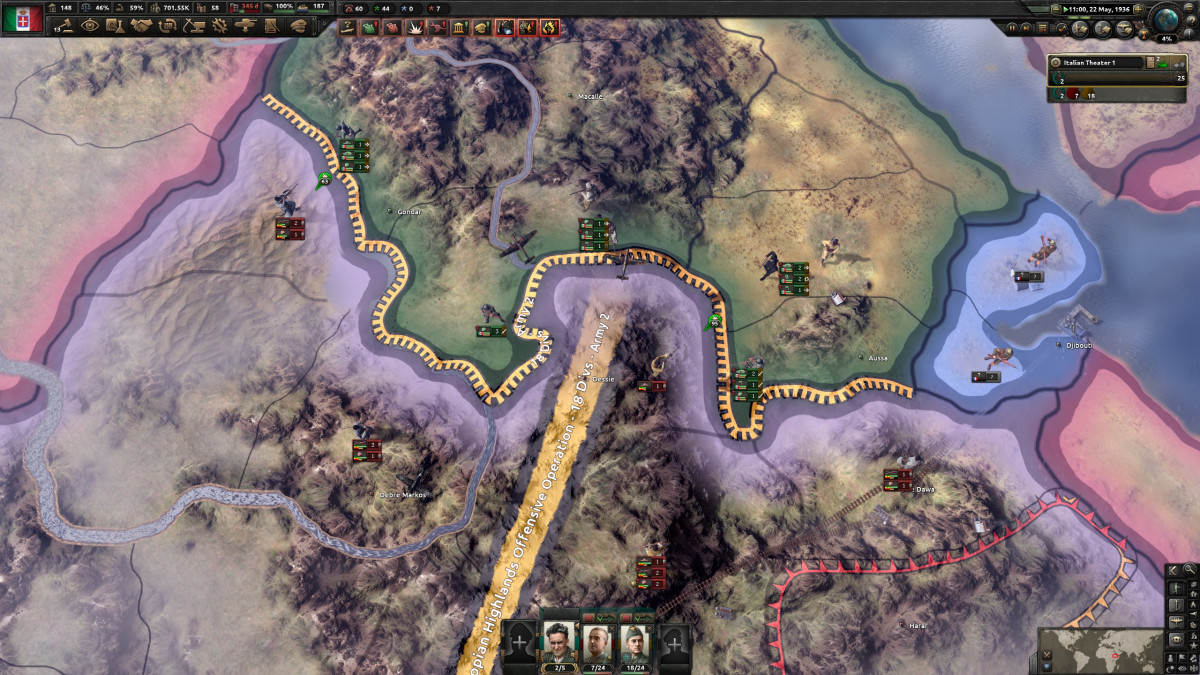
Recovery Rate: How much organization the division will recover per hour when out of combat.
Reconnaissance: How much recon a ability a division has. In practice, higher recon means that a division is more likely to choose a battle tactic that counters that of the enemy, thus getting an upper hand in battle. The easiest way to increase this stat is to add a recon support company to the division.
Suppression: How good the division is at suppressing partisan activity. Only really matters for your garrison template.
Weight: How heavy a division is. The higher this value is, the more convoys will be required to transport the division across water (or transport planes for paratroopers).
Supply use: How much strain the division will put on your supply logistical system. Exceeding the supply capacity in any given area will result in reduced combat effectiveness, lower organization recovery, and potentially attrition if the supply is very low.
Average Reliability: High reliability reduces the likelihood of equipment loss due to failures. If this value is too low, you might find it difficult to keep divisions supplied because they will lose the equipment faster than you can replenish it. You can increase this by adding a maintenance company to your division and/or ensuring that your equipment designs (such as tanks) don't have low reliability.
Trickleback & War Support Protection: The percentage of casualties in the division that will be saved from death by medical care. Saved casualties will trickle back into your manpower pool, and will not damage your country's War Support. This value will generally always be at zero unless you add a Field Hospital support company to the division.
Experience Loss: This is a modifier to the amount of division experience lost when casualties are replenished by fresh recruits. The value starts at zero, meaning there is no modifier. The bigger the negative number, the less experience you will lose. Adding a Field Hospital is the main way to improve this stat.
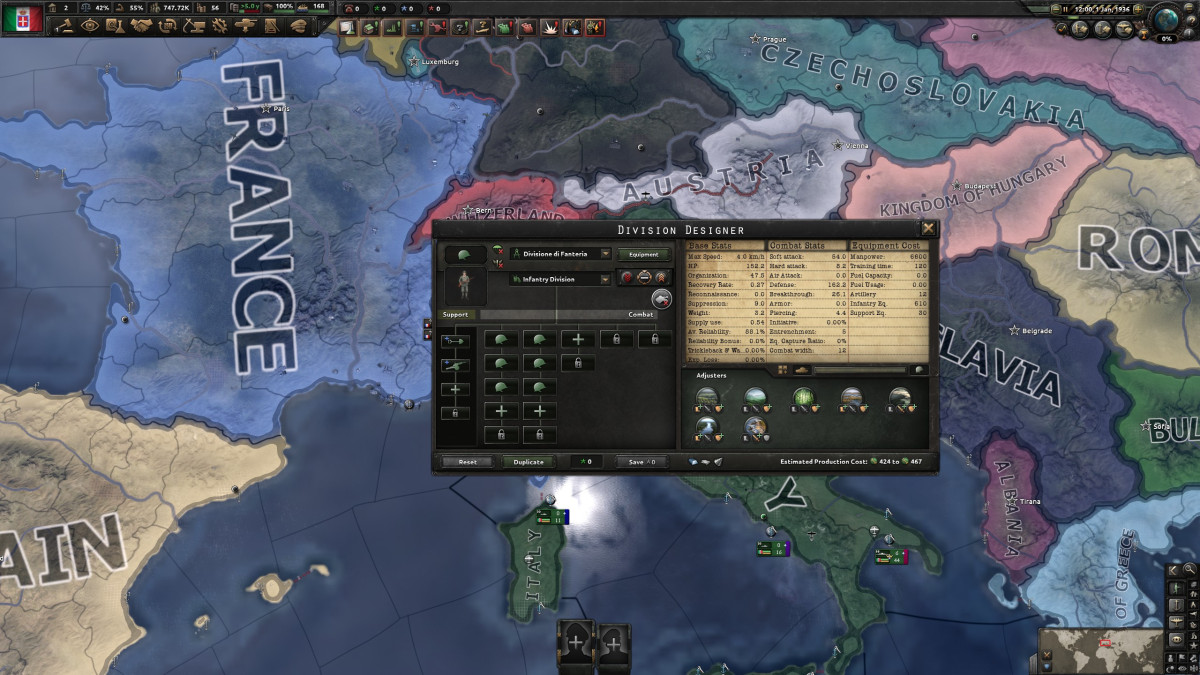
Soft Attack: How many attacks per hour a division can make against "soft" targets, i.e. targets with little to no armor. Artillery is a good way to increase this. Each attack has a 40% chance to hit if the enemy has used all of its defenses, otherwise a 10% chance.
Hard Attack: How many attacks per hour a division can make against "hard" targets, such as tanks and armored personnel carriers (Mechanized infantry). Anti tank companies or battalions are a good way to increase this, and anti air also adds a decent amount.
Air Attack: How much damage a division can do to attacking enemy airplanes. A higher value means more aircraft will be shot down, and the debuff caused by enemy air superiority will be partially mitigated. If your enemies have a stronger air presence than you, this can be very useful.
Defense: How many enemy attacks a division can avoid. When all defense has been used up, the division is more susceptible to taking enemy hits. Effectively allows a division to hold the line for longer.
Breakthrough: Basically the same as Defense, except it applies when the division is attacking rather than when defending. Effectively allows divisions to attack for longer.
Armor: If your division's armor stat is higher than the enemy's piercing stat, they will take 50% less damage. This will also allow them to make more attacks in combat, simulating the fact that they can move freely around the battlefield without being pinned down by the enemy's weapons.
Piercing: How much armor your division is capable of piercing. Anti tank weaponry is a good way to increase this value. See the Armor stat above for the penalties your divisions will suffer if they are unable to pierce a target.
Initiative: Higher initiative allows your divisions to accumulate the battle planning bonus more quickly, and increases the speed at which they will join a battle as reinforcements (as long as combat width permits them to do so)
Entrenchment: The maximum entrenchment value that a division can attain. Entrenchment is built up passively when a unit is stationary and out of combat, until it reaches the maximum level. Moving, initiating an attack or retreating will immediately remove all entrenchment. Entrenchment effectively acts as a percentage modifier to the attack and defense values of your division.
Combat Width: How much space your division takes up on the battlefield. Each battle has a combat width dictated by the terrain type, which can be further increased if the attacker is attacking from several directions. Divisions will not be able to reinforce a battle if doing so would cause your side of the battle to exceed the combat width, so in these situations they will wait in reserve until the combat width increases or a friendly combatant division retreats from the combat. Typically, the more battalions are in your division, the larger the combat width will be. Support companies do not impact combat width.
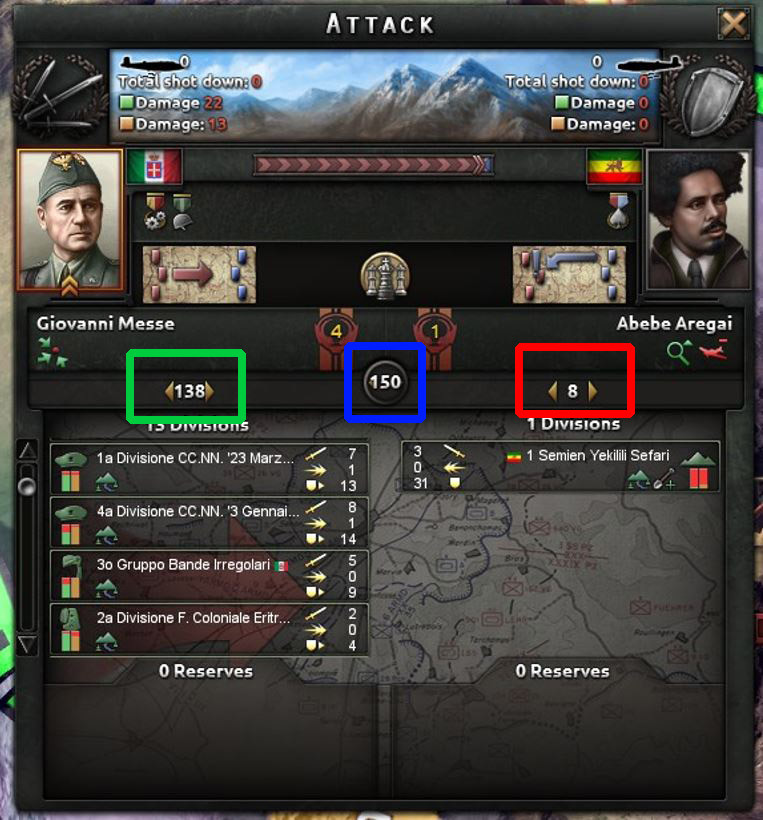
Hardness: Dictates how many soft attacks vs hard attacks the division will suffer. A hard division will receive more hard attacks than soft attacks, which usually means they will receive less attacks in general unless their enemy has focused a lot on hard attack.
Manpower: How many men are needed to fill the division. This is subtracted from your country's manpower pool when the division template is recruited, and any manpower damage will be replenished from your manpower pool until it returns to this value.
Training Time: How long it takes to train the division to level 2 (in days)
Fuel Capacity: How much fuel the division can carry with it. Allows divisions that need fuel to operate properly for a while even if they are lacking fuel supply.
Fuel Usage: How much fuel the division will use. They will use more when in combat or when moving.
The remaining stats are simply telling you how much equipment of each type the division needs to be considered fully supplied and at 100% strength.
Next up are the naval stats. Ships can perform a variety of roles in HOI4, such as convoy raiding, scouting, seek & destroy missions, supporting naval invasions and shore bombardment. Some stats, for example Deck Size, are only relevant for ships of a particular type.
Also an important thing to know about Naval combat is that you should aim to have a ratio of 3 screens (small ships) to capital ships. This ratio means that your capital ships are adequately protected in combat, are less likely to sustain critical damage and can fight more effectively.
Max Speed: How quickly a ship can move.
Max Range: How far the ship can stray from the nearest friendly naval base.
Organization: Works in a similar way to Organization for land units. If the organization depletes to zero, the ship cannot fight or move effectively.
HP: How much damage the ship can recover before it is destroyed. You can repair ships by returning them to a friendly report for repairs.
Reliability: Simulates the chance of random equipment failures. Ships with lower reliability are more likely to sustain critical hits during combat, especially from torpedo attacks.
Supply use: How much supply the ship will consume.
Deck Size: How many planes a Carrier can fit on the deck. Putting more planes on a carrier than the capacity allows for will reduce the effectiveness of sorties by 4.4% per extra plane.
Light Attack: How much damage is done by the ship's light guns. Light guns are more effective against small ships.

Light Piercing: How much armor your light guns can pierce.
Heavy Attack: How much damage is done by the ship's heavy guns. Heavy guns are more effective against large/capital ships.
Heavy Piercing: How much armor your heavy guns can pierce.
Torpedo Attack: How much damage your ship can do with torpedos.
Depth Charges: How much damage your ship can do to enemy submarines with depth charges.
Armor: Protects the ship from enemy attacks that cannot pierce the armor. Note that torpedos ignore armor entirely.
Anti-Air: Protects against enemy airplane attacks, and increases the likelihood of shooting down attacking planes. Also protects against port strike attacks while the ship is in port.
Fuel Usage: How much fuel the ship will consume when moving, fighting or training.
Surface Visibility: How easy the ship is to spot. The lower the value is, the more likely the ship is to avoid detection.
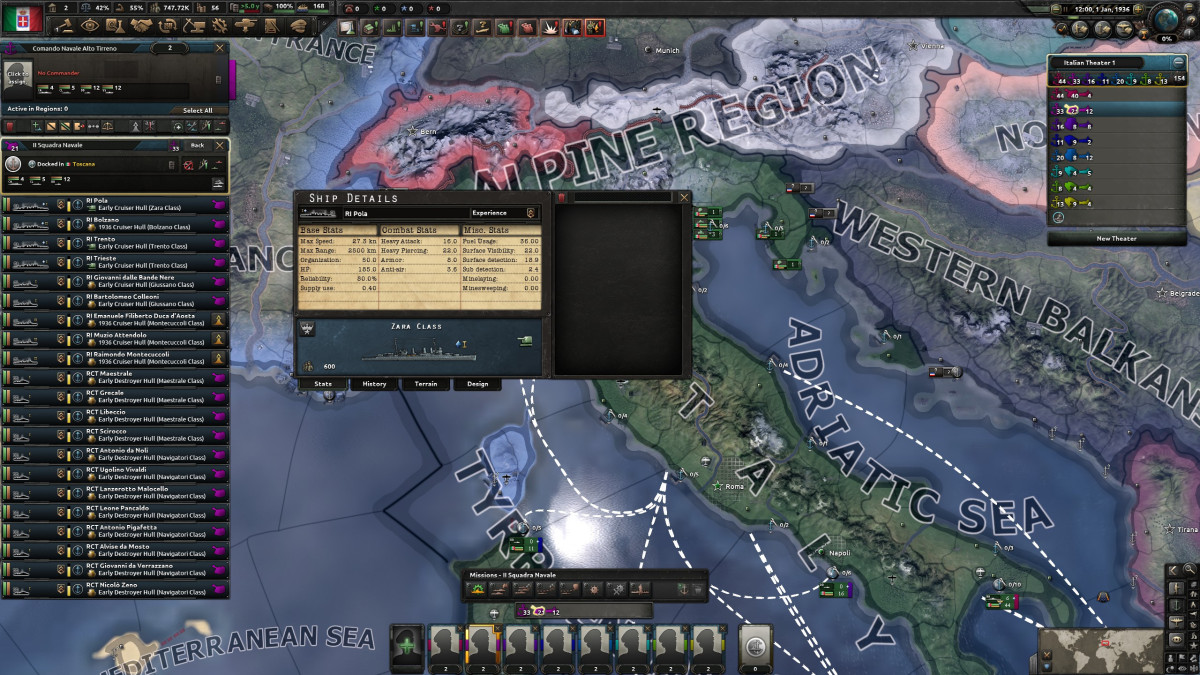
Surface Detection: How good the ship is at detecting enemy surface vessels.
Sub Visibility: How easy the submarine is to spot. Having low visibility is especially important for submarines intended for convoy raiding.
Sub Detection: How good the ship is at detecting enemy submarines. Destroyers and Light Cruisers are generally the best at detecting and fighting against submarines, so you should focus on improving these ships if you want to counter a submarine threat. Having air superiority and naval bombers in a sea zone is also a good way to counter subs.
Air Combat Stats Explained for HOI4
Finally we have the air combat stats. Having planes with higher combat stats can turn the air war in your favor, even if you are outnumbered in the skies. Not all of the stats are related to air combat though, some of them have more to do with their ability to perform certain missions.
Max Speed: How quickly the plane can fly. Can be increased by improving the engines and thrust/weight ratio.
Range: How far the plane can stray from its base when on a combat mission. Planes will not be able to operate at full efficiency in air zones that are partially outside this range, and will not be able to operate at all in air zones that are completely outside. The range is displayed on the map as a circle when you select an air wing.
Weight: How heavy the plane is. This value is used in combination with the Thrust value to determine the plane's final max speed value.
Thrust: If the plane's Thrust is higher than its Weight, then the excess thrust will translate into more speed for the plane.
Supply Use: How much supply is consumed by the plane, adding strain to your logistics system.

Air Defense: How many hits the plane can take before it is shot down.
Air Attack: How much damage the plane can do to enemy planes. This also helps with air superiority.
Agility: One of the most important stats, particularly for fighters. High agility means that planes are more likely to land hits on enemy planes, and more likely to avoid incoming hits.
Air Superiority: How much the plane will help with air superiority in an air zone. Having air superiority makes enemy ground troops fight less effectively, and helps to protect your own planes from air attacks. It will not protect them from ground based AA guns though.
Naval Attack: How much damage the plane will do if it successfully lands a hit on a ship.
Naval Targeting: How likely the plane is to land a successful hit against a ship.
Ground Attack: How much damage the plane can do to enemy ground units, when on the Close Air Support mission.

Strategic Bombing: How much damage the plane can do to enemy buildings and infrastructure when on the Strategic Bombing mission.
Reliability: How safe the plane is against being lost to mechanical failure. Values over 100% will not give any additional benefit.
Fuel Usage: How much fuel the plane uses when fighting, training or flying to a new base.
Night Penalty: Planes performing operations at night are less effective than they would be in the day. But if this value is positive in the stats for your plane (it starts at 0%) then that means the night penalty is being reduced by that amount, so your planes will perform better than usual at night.
We hope you found this guide about Hearts of Iron IV combat stats useful.
Paradoxwikis was used as a reference for some of the information in this guide.

